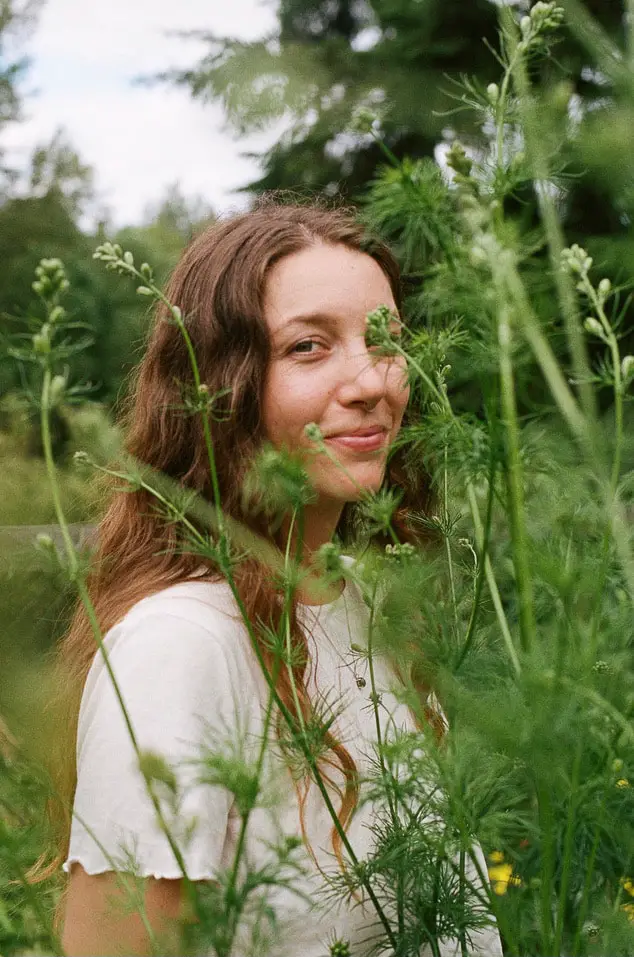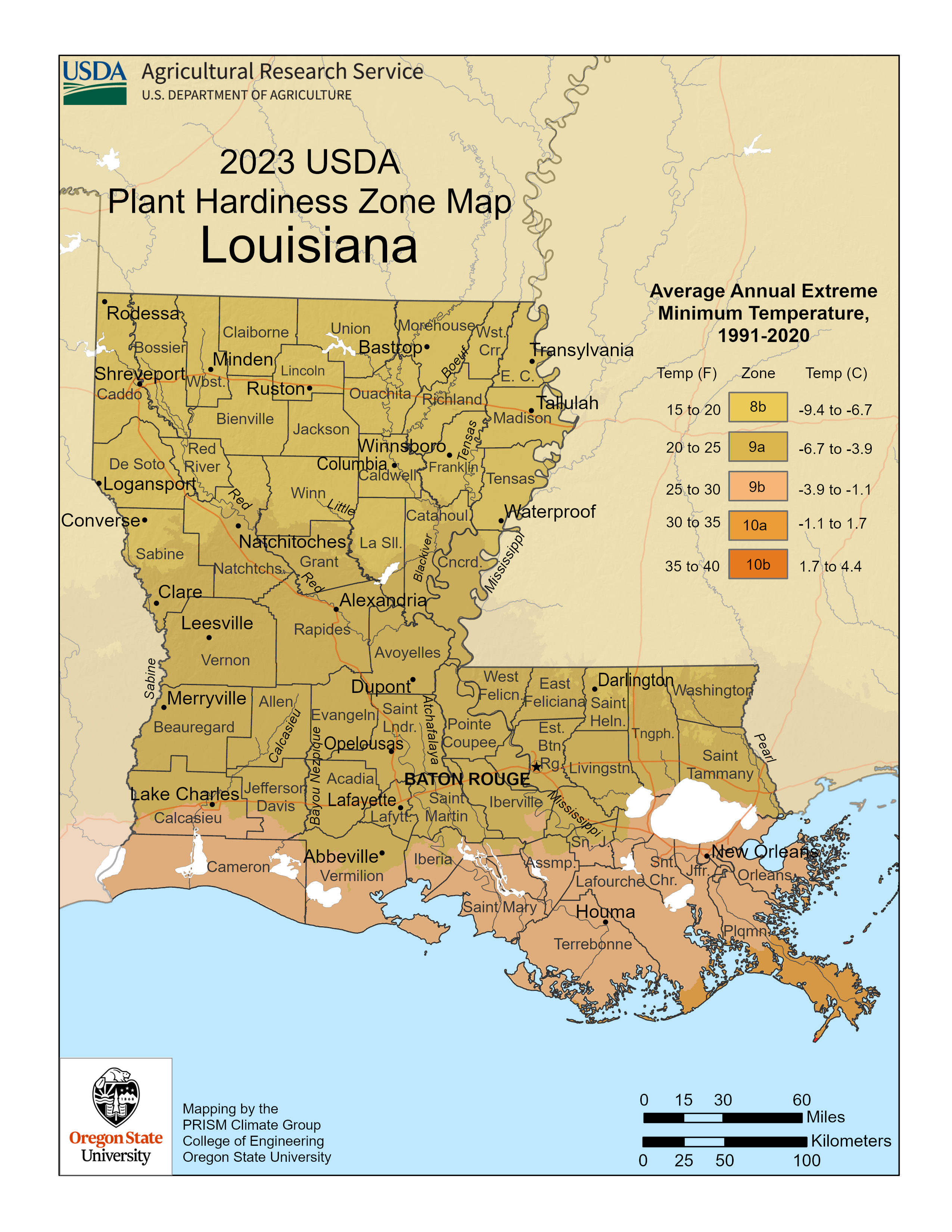Louisiana Plant Hardiness Zones
| USDA Hardiness Zone | Average Minimum Extreme Winter Temperature Range Fahrenheit (°F) Celsius (°C) | Average Last Frost Date Range In Spring (Beginning Of The Growing Season) | Average First Frost Date Range In Autumn (End Of The Growing Season) |
|---|---|---|---|
| 8b | 15°F to 20°F -9.4°C to -6.7°C | Mid to late March | Early to mid-November |
| 9a | 20°F to 25°F -6.7°C to -3.9°C | Early to mid-March | Mid to late November |
| 9b | 25°F to 30°F -3.9°C to -1.1°C | Mid to late February | Early to mid-December |
| 10a | 30°F to 35°F -1.1°C to 1.7°C | Early to mid-January | Mid to late December |
| 10b | 35°F to 40°F 1.7°C to 4.4°C | Early to mid-January | Mid to late December |
Louisiana Growing Conditions
General Climate
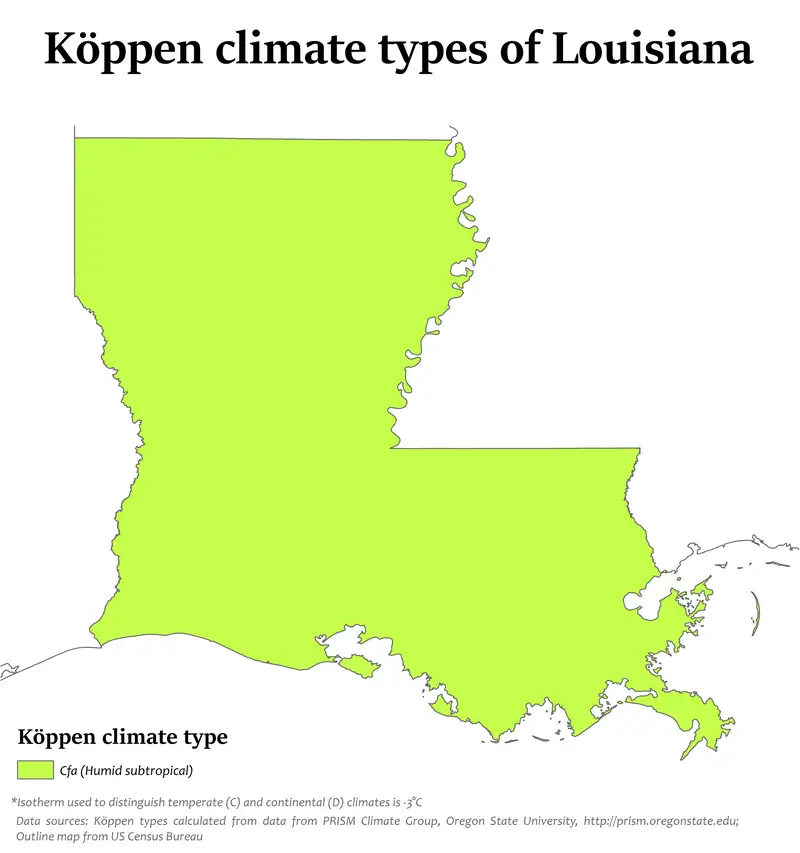
Louisiana is within the subtropical climate range and is greatly impacted by its close proximity to the Gulf of Mexico. The state is also split by the Mississippi River, experiencing continental weather fronts as well.
The summers in a subtropical climate are muggy and hot, with the average temperature ranging around 82°F (28°C). High humidity is a common characteristic of a subtropical climate.
Winters in this climate stay mild, with temperatures averaging 50°F (10°C). Typically, Louisiana can see frost ranging from early November to late December, depending on where you are in the state, and can experience the last frost as early as February to mid-March.
From June to November, Louisiana experiences tropical storms and hurricanes and receives an average of 50 inches of rain annually.
Microclimates
USDA plant hardiness zones are an important starting point for your garden, but you’ll also need to consider microclimates.
Microclimates are areas where specific conditions create a climate different from the climate they’re situated in.
Buildings, fences, paved areas, or short hills and valleys can create these microclimates.
They can be as small as a space in your backyard or as large as a city.
In other words, learn about your local conditions from local experts to see if your garden falls into a microclimate.
Extreme Weather
Hurricanes
Hurricane season in Louisiana lasts for approximately six months, from June to November, and can be damaging to your garden. With a little bit of prep and a lot of luck, you can mitigate hurricane damage in your garden.
Try protecting small-blooming flowers by covering them with a bucket and anchoring it down with something heavy. This helps against strong winds. Tie in vining or tree-dwelling plants with twine and wrap bigger shrubs in burlap.
By prepping your garden in these ways, you can help protect the plants more susceptible to damage during these extreme weather events.
Tropical Storms
Lousianna experiences tropical storms six months out of the year. These storms bring flash flooding, high winds, hail, and lots of rain. Over-accumulation of rain can negatively impact your garden and cause plant roots to rot or trees to become more susceptible to being uprooted by strong winds.
If you typically have moist soil, lay a heavy layer of mulch down over your garden beds. This helps protect trees and shrubs with shallow root systems from the soaking effects of flash flooding and can help stabilize them during strong winds.
Heat And Humidity
Warm, humid weather can help plants grow at a quicker rate, but too much dead heat from the afternoon sun can wilt plants if not watered properly. Irrigation in your garden during the hottest months of the year helps keep plants healthy and happy.
Weekly organic fertilizer applications are also beneficial to a successful summer season. When plants are strong and healthy, they become more resilient to fluctuating weather patterns.
Growing Season
Louisiana’s growing season ranges from 220 to 320 days. This is considered a very long growing season. If you plan correctly, you can plant and harvest veggies and flowers every month of the year.
The first frost occurs between November and December, depending on your location in the state. The last frost occurs between late February and mid-March.
It’s important to note that even though the growing season is long, some plants may not fare well in the extreme heat during the summer months.
Louisiana Gardening Tips
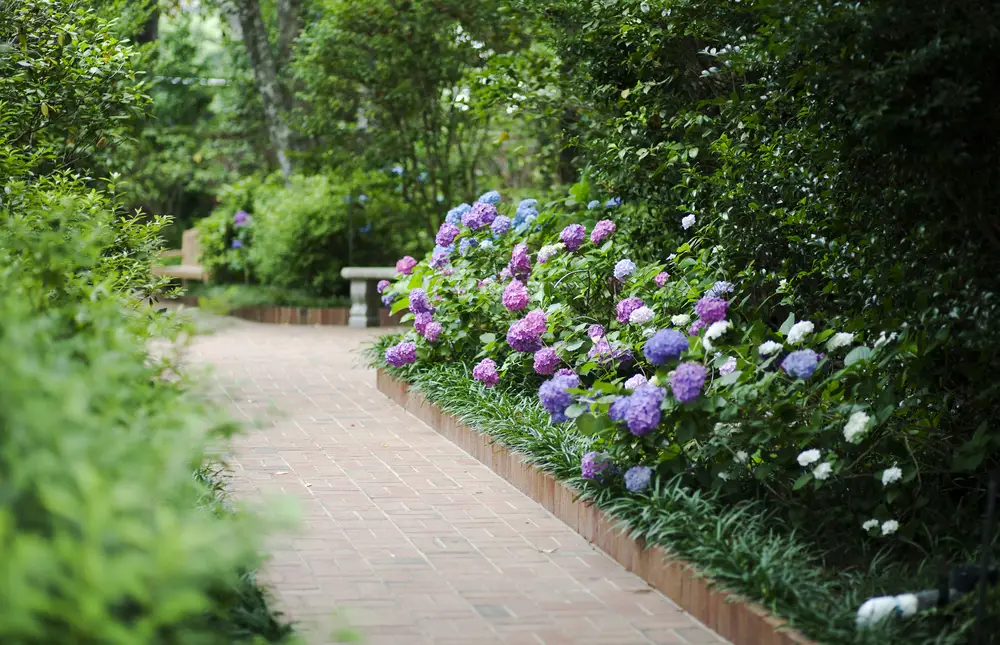
Take Advantage Of Long-Growing Seasons
In Louisiana, you can grow and harvest veggies and flowers every month of the year. Understanding what plants to grow when, which plants prefer cooler temps, and which plants like it really hot is key to successful year-round growing in Louisiana.
Following a planting guide can help you to be efficient and get a feel for the extended growing season. Plant cool greens like lettuce in the spring and fall. Leave the peppers and tomatoes for the hot summer sun.
The season is so long that it’s possible to plant two successions of heat-loving plants, like tomatoes and eggplant, in this climate. Try starting tomato and eggplant seeds in late July for fall harvesting.
Beat The Humidity And Heat
The extreme heat and humidity can be challenging for gardeners of Louisiana, but if you know how to use it to your advantage, it can be such a blessing to live in its warm climate.
Using low-maintenance plants that are tolerant to heat is an easy and impactful way to grow your garden.
Drip tape irrigation is also an important tool for growing in Louisiana’s humid climate. This form of irrigation helps reduce mold and mildew that can build up on plants in areas of high humidity. It is also the best form of irrigation for water conservation, as less evaporation occurs when using this method, allowing the plants to absorb more of the moisture compared to using overhead watering methods.
Plant For The Wildlife
Louisiana has so much wildlife! Growing native plants for wildlife can increase the ecological biodiversity of your growing space and return the natural heritage of Louisiana. By choosing native plants, gardeners can help the planet while also creating sustainable landscapes for future generations to come.
Growing native plants is less maintenance, they have more of a resistance to extreme weather in the Louisiana climate and can create respite for so many pollinators. By attracting pollinators to your growing space, you will help to pollinate all your fruits and veggies, creating higher yields and healthier plants!
Consult With Local Professionals
Consulting with local gardening professionals allows you to benefit from their experience with your area’s conditions, the plants that do well there, and overall best practices.
Louisiana Plant Suggestions
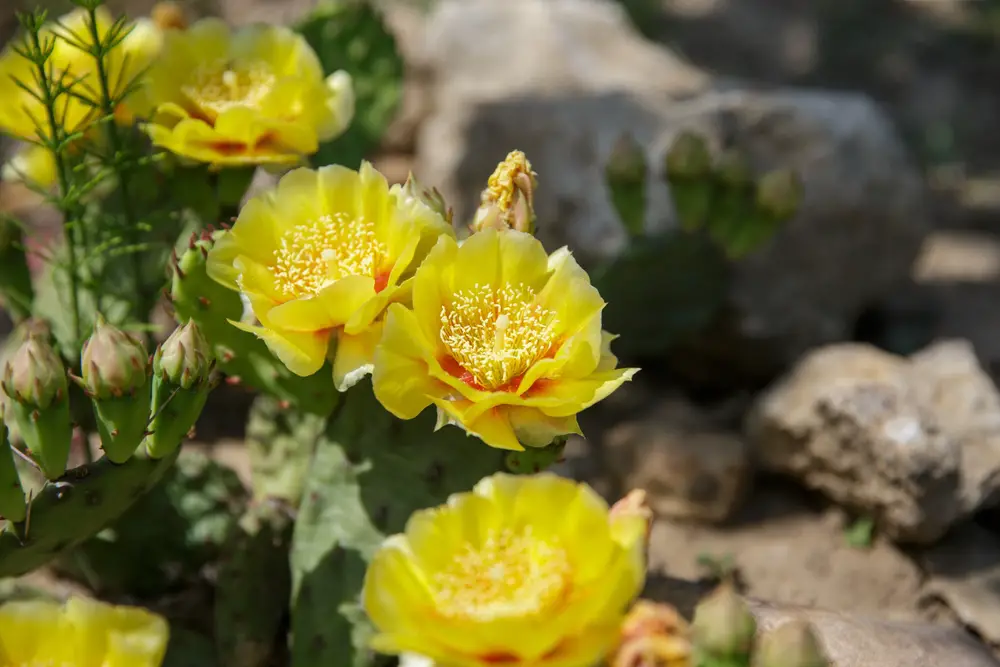
Trees
- Cow Oak (Quercus Michauxii)
- Black Locust (Robinia Pseudoacacia)
- Soapberry (Sapindus Saponaria Var. Drummondii)
Shrubs
- Virginia Sweetspire (Itea virginica)
- The American Beautyberry (Callicarpa americana)
- The American Strawberry bush (Euonymus americanus)
Flowers
- Gulf Coast Penstemon (Brazos penstemon)
- Brown-eyed Susan (Rudbeckia triloba)
- Tropical Sage (Salvia coccinea)
Vegetables
- Beauregard Sweet Potato (Ipomoea batatas)
- Sunrise Bumble Bee Tomato (Solanum lycopersicum)
- Squash (genus Cucurbita)
Herbs
- Anise Hyssop (Agastache foeniculum)
- Appalachian Mountain Mint (Pycnanthemum flexuosum)
- Bronze Fennel (Foeniculum vulgare ‘Purpureum’)
Spices
- Wild Chervil (Cryptotaenia canadensis)
- Coriander (Coriandrum sativum)
- Basil (Ocimum basilicum)
Fruits
- Black Cherry Tree (Prunus serotina)
- Alma Fig (Ficus carica ‘Alma’)
- American Persimmon (Diospyros virginiana)
Succulents
- Eastern Prickly Pear (Opuntia humifusa)
- Lemon sedum (Sedum mexicanum)
- Cockspur Prickly Pear (O. pusilla)
Disclaimer
Any of the above can change and is not exhaustive.
Treat anything above like a good starter guide. Then use that as a foundation as you consult with local gardeners, professionals, forecasts, guides, and organizations.
